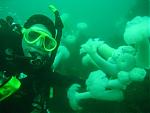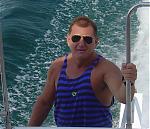Truth be known I rely heavily on my computer.
Altitude diving is another aspect all together and much has been writen and is easy to find on the net and at your local dive shop.
One of the trick, as I understand, is knowing at what altitude you will be spending time after the diving is done for the day.
Experiance is the best teacher, having some one willing to take you to a new spot is always good. Being able to say "Look this may be beyond your skill level, do you still want to go?" is a good way to let them back out gracefully.





 Reply With Quote
Reply With Quote





